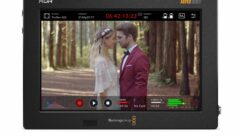Runco CineWide Sparks Video Conversation
Aug 21, 2006 12:00 AM
Sam Runco had big things in mind when he coined the term “home theater” back in the 1980s. The founder of high-end projector company Runco International envisioned big sound and big pictures—a larger-than-life experience that brought the emotional impact of the cinema to the comfort of the living room sofa using a CRT projector shining onto a separate screen. He didn’t expect the term to dilute into a catchall phrase covering everything from LCD/DVD combos to home-theater-in-a-box systems.
With the term home theater having diluted into a numbers game at retail, Runco and other high-end video companies are looking to the wider screen to create an experience that even the glitziest plasma TV can’t rival. With consumers grabbing for everything thin in a market where profit margins are eroding by the minute, Runco and other high-end companies are fighting back with technologies based on dramatic widescreen technology first developed by Twentieth Century Fox 50 years ago. The immediate benefit evident to viewers? Elimination of the dreaded black bars.
Runco labels its widescreen feature CineWide, a line of DLP projectors designed to make the most of every pixel. CineWide uses processing to stretch the image to fill the screen and then adds an anamorphic lens to reshape the 16:9 chip to 2.35:1. This time, the trademarked term remains in the family: projectors from Runco and sister company Vidikron carry the CineWide and CineWide with Autoscope labels.
Runco rep John Bishop of Bishop Audio Services sees CineWide as the launching pad for an image overhaul among video specialty dealers. He’s on a crusade to bring the same kind of enthusiasm high-end audio generates at the specialty retail level to the video market.
“There are things that make video performance excel beyond the average,” Bishop says. “Specialists can show things that can’t be found at Circuit City or Best Buy, but we don’t have the language or confidence to consistently demonstrate and articulate what it is and why it’s more pleasant to watch hour after hour.”
Compare that to the audiophile world where there’s an established vocabulary to describe the elements that separate esoteric electronics from the masses. A specialty dealer selling a high-end speaker knows how to demo product and convey the language of the connoisseur: the build quality of drivers, the crossover network, accuracy, and the lack of listening fatigue. “Then there are the underlying distortions and resonances that you can’t measure by conventional means, [such as] a brilliant speaker enjoyable to listen to hour after hour compared with an average loudspeaker that’s fatiguing to after a half hour,” Bishop says.
The same things apply to the video market, he says, but no one is speaking the language. “CineWide is an opportunity for specialists to take control of the video conversation again,” he says, describing the widescreen experience as artistically compelling. He encourages dealers to discuss Scope technology in high-fidelity cinematic terms using references to color fidelity, dynamic range, and the ability to see details in bright scenes and dark scenes. “That’s the language of cinema and not the language of industrial displays, which is all we’re hearing about these days, and that’s making it difficult for specialists to develop the right language and convey benefits to consumers.”
Bishop compares the video market today to the audio market of the mid-’70s before the Federal Trade Commission required amplifier makers to use the same measurement criteria for power ratings. Specs for contrast ratio and brightness mean nothing, he says, because there are no reference points for the ratings.
Bishop doesn’t stop at the screening room. He wants dealers to sell the hi-fi video message all over the house. “I’m talking about the concept of whole-house cinema architecture,” he says. For customers who have to have the best, the high-end approach is a solution for the entire house that’s different from simply buying TVs for every room where they want video.
“I’m talking about every display in the AV design meeting the fidelity standards of cinema,” he says. “That’s different from saying that all the projectors are 720p or 1080p. We’re saying the color fidelity is there and it matches the standards of the cinema industry.”










